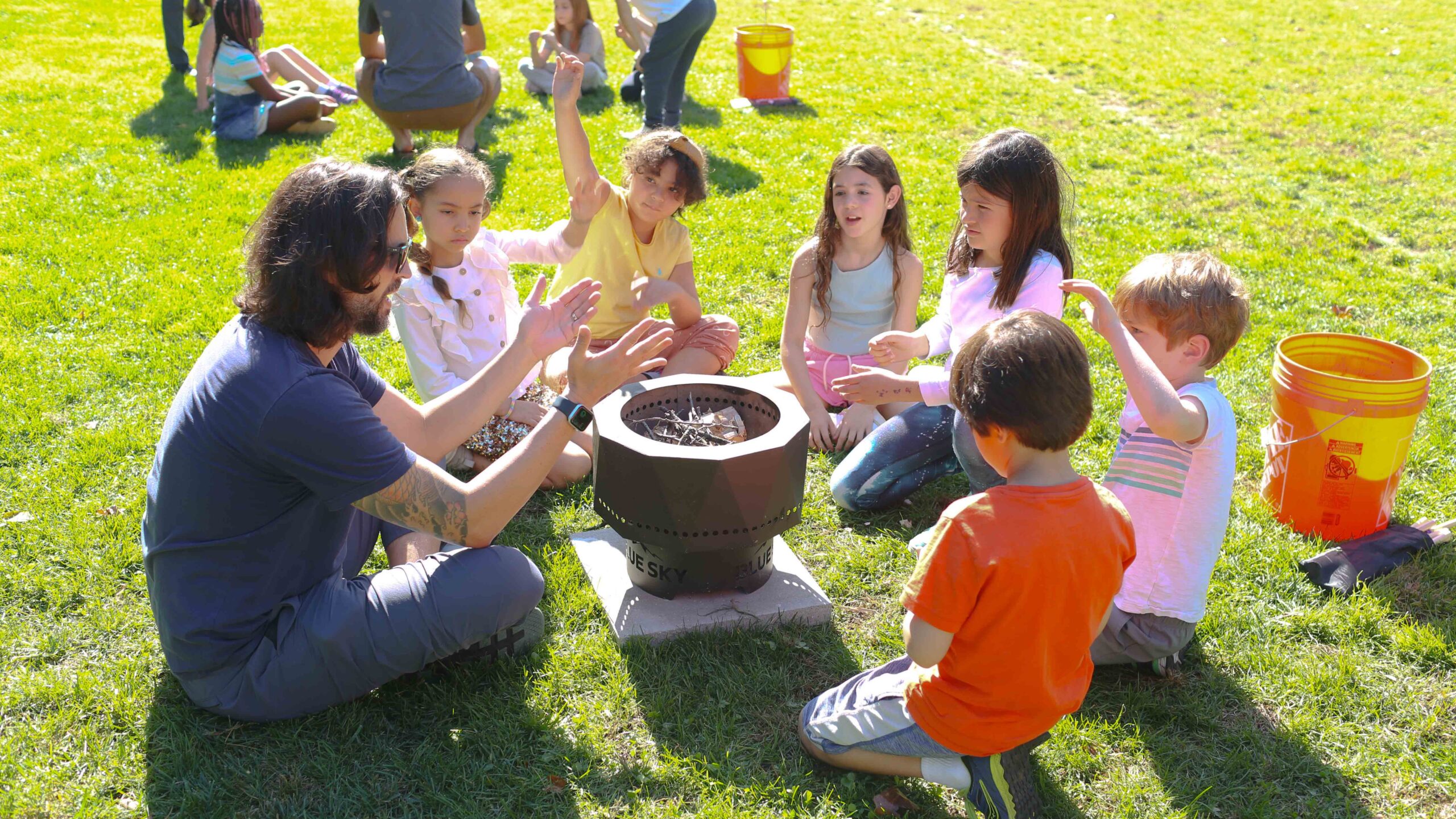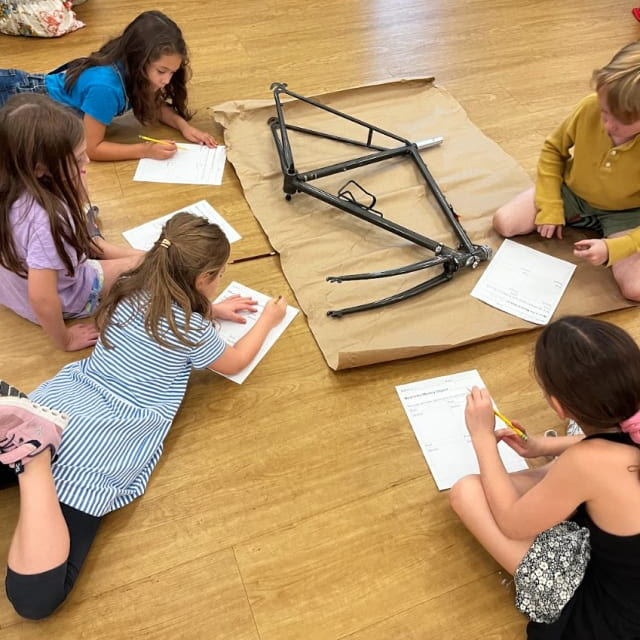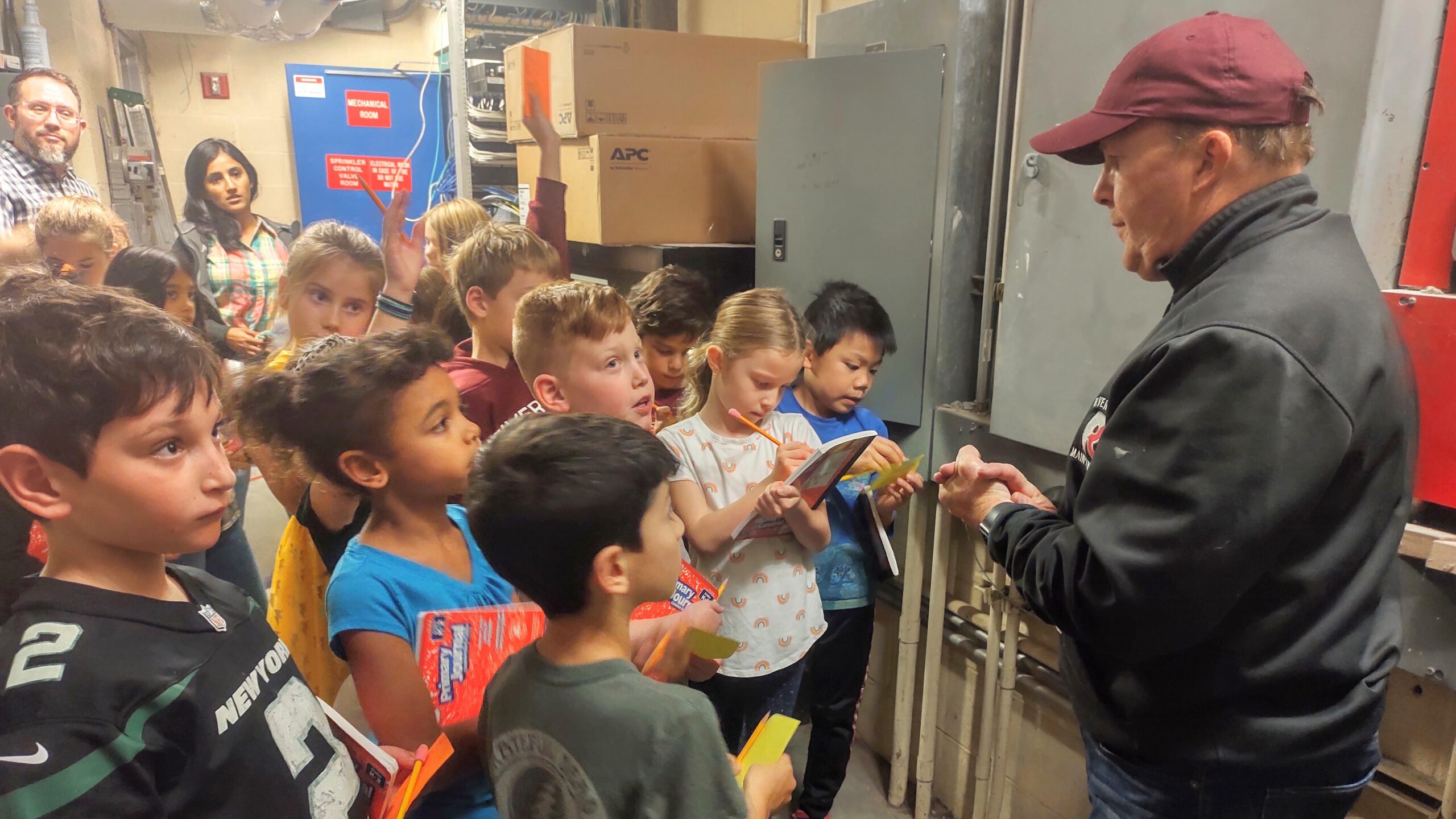
“What is a system?” asks Lower School Science Coordinator Traci Pearl.
In a second grade classroom, hands shoot up.
“A system is a bunch of parts that come together to create a function,” says one student. “If you take a part out, it might still work, but not as efficiently.” Teacher Vincent DiGeronimo acknowledges that response, and the use of the word “efficiently.” Then, Ms. Pearl calls on another eager student, who adds, “If you take another part out, it won’t work.”
This is inquiry studies in second grade, when students take in new information, ask and answer questions, pose follow-up questions, and seek more answers. They discuss the systems they have explored during the past few days.
The unit began with a mystery museum experience, when each second grade class received a small part of an unnamed system, and speculated about its purpose. How could this piece of metal fit into something larger? What could it actually be?
They discovered that they were looking at parts of a bicycle. Comparing their disparate parts to working bicycles, they could see how the assorted components form a whole.
They collaboratively developed definitions of systems, agreeing on the additional vocabulary they needed to understand and describe different kinds of systems.
They dissected everyday items to determine whether they qualified as systems. They opened up a typewriter, looked inside a piano, examined parts of a computer, peeked inside a xylophone, and delved into the mechanics of compost tumblers. Throughout each endeavor, there were opportunities to ask and answer questions, to listen and learn


A highlight of the systems unit was a visit to the boiler room, guided by River Campus Maintenance Supervisor Sean Mahoney. There, students discovered the web of systems that keep our school running, from heating and cooling systems, to water and electricity. This look inside campus infrastructure was followed by more inquiry learning, featuring a question and answer discussion with Mr. Mahoney.
Another memorable day involved three crackling fire pits on the lower field. In small groups, students set out to determine how a campfire can be considered a system. Together, they named multiple forms of energy: heat, light, sound, chemical reactions, potential energy (the kindling), and kinetic energy. Then, as a special treat, they roasted marshmallows, tasting that particular result of a fire’s function.
Later in the year, second graders will use these fire pits again when they spend the night at school for a campout.
Back in the classroom, students reflected on their experience:
“I loved building a fire because I got to see the flame,” wrote one student.
“Building a fire was educational because we got to see how the flames move. Looking at almost pure energy was amazing,” wrote another.
“It was epic.”